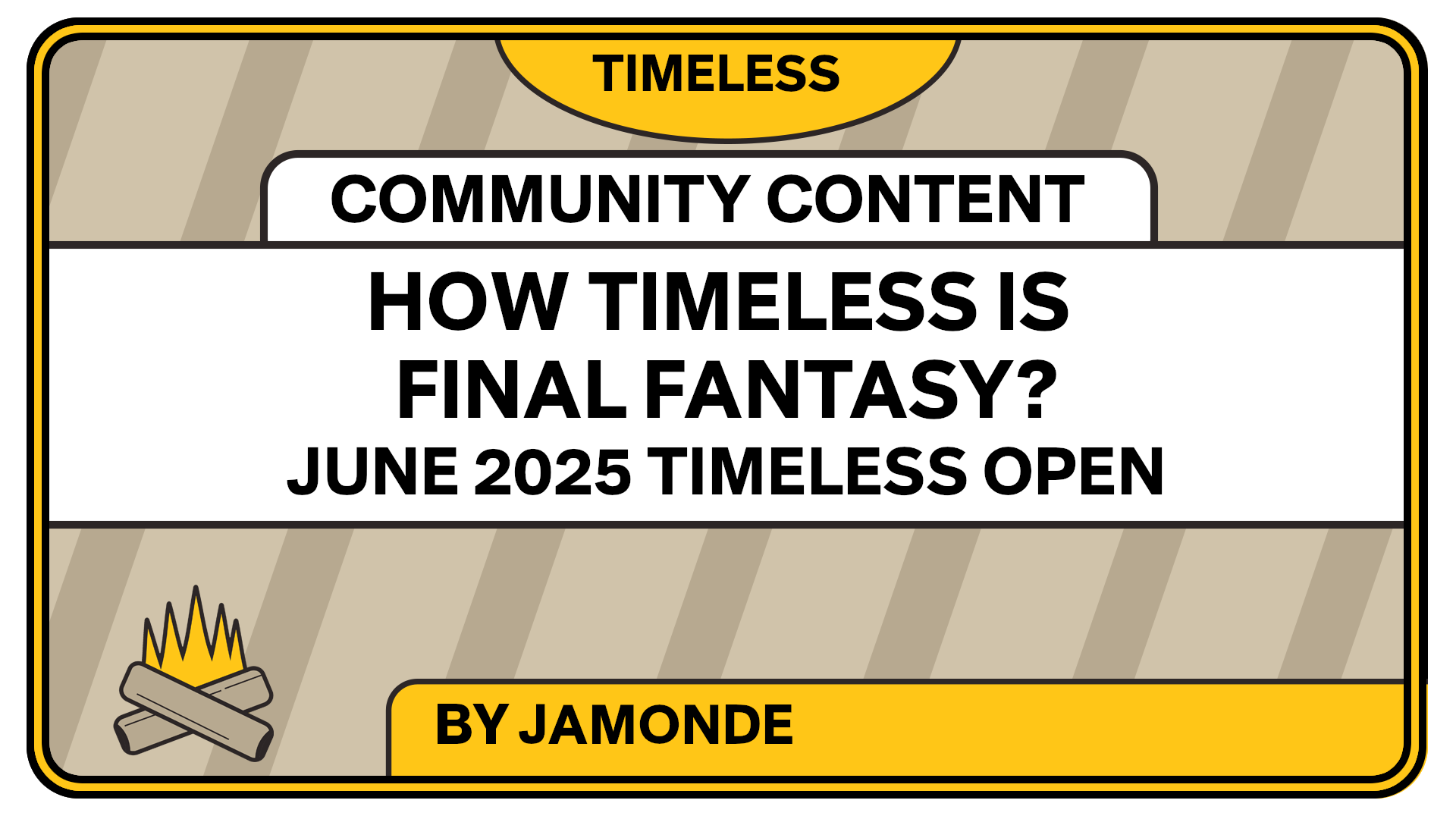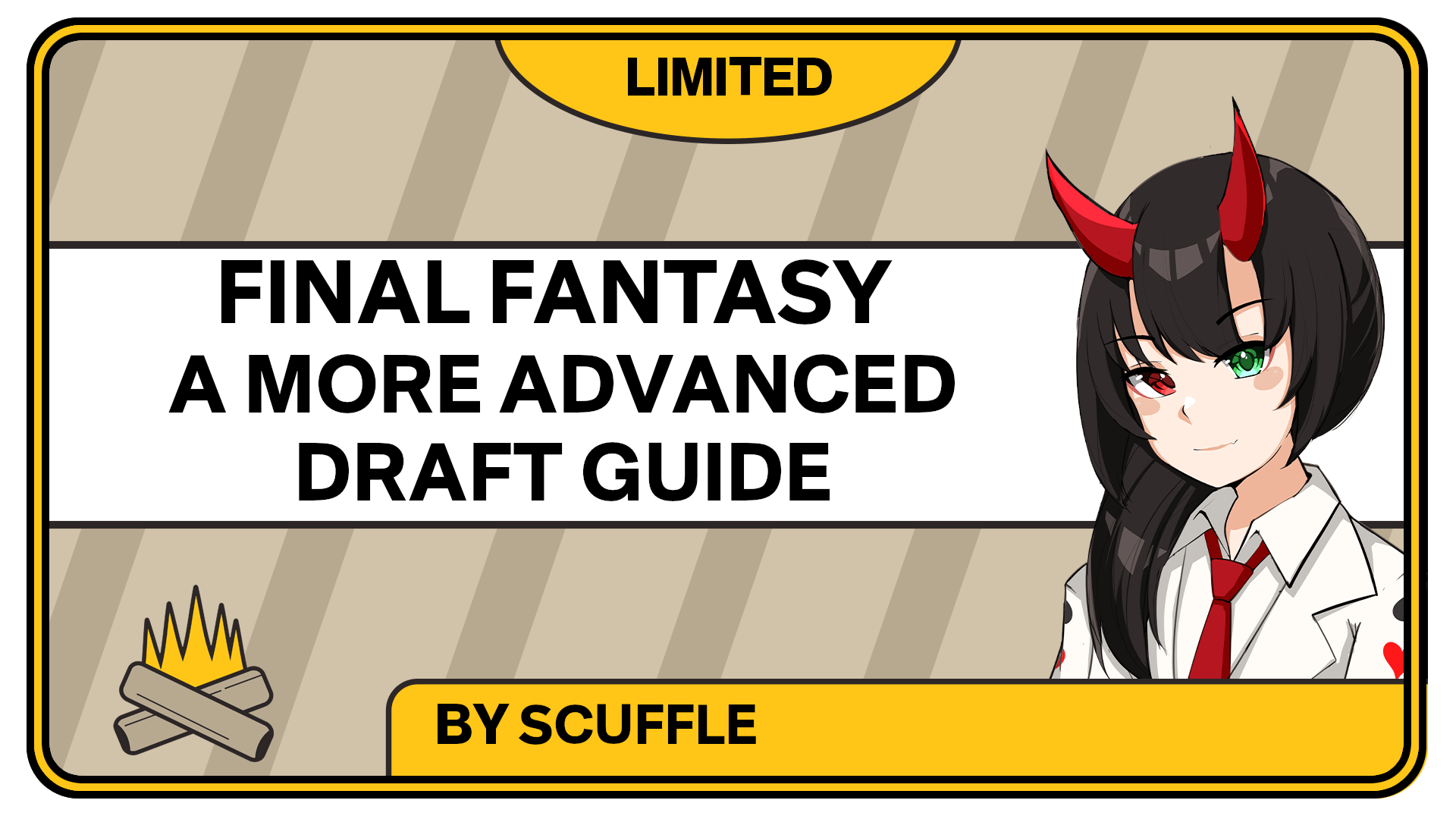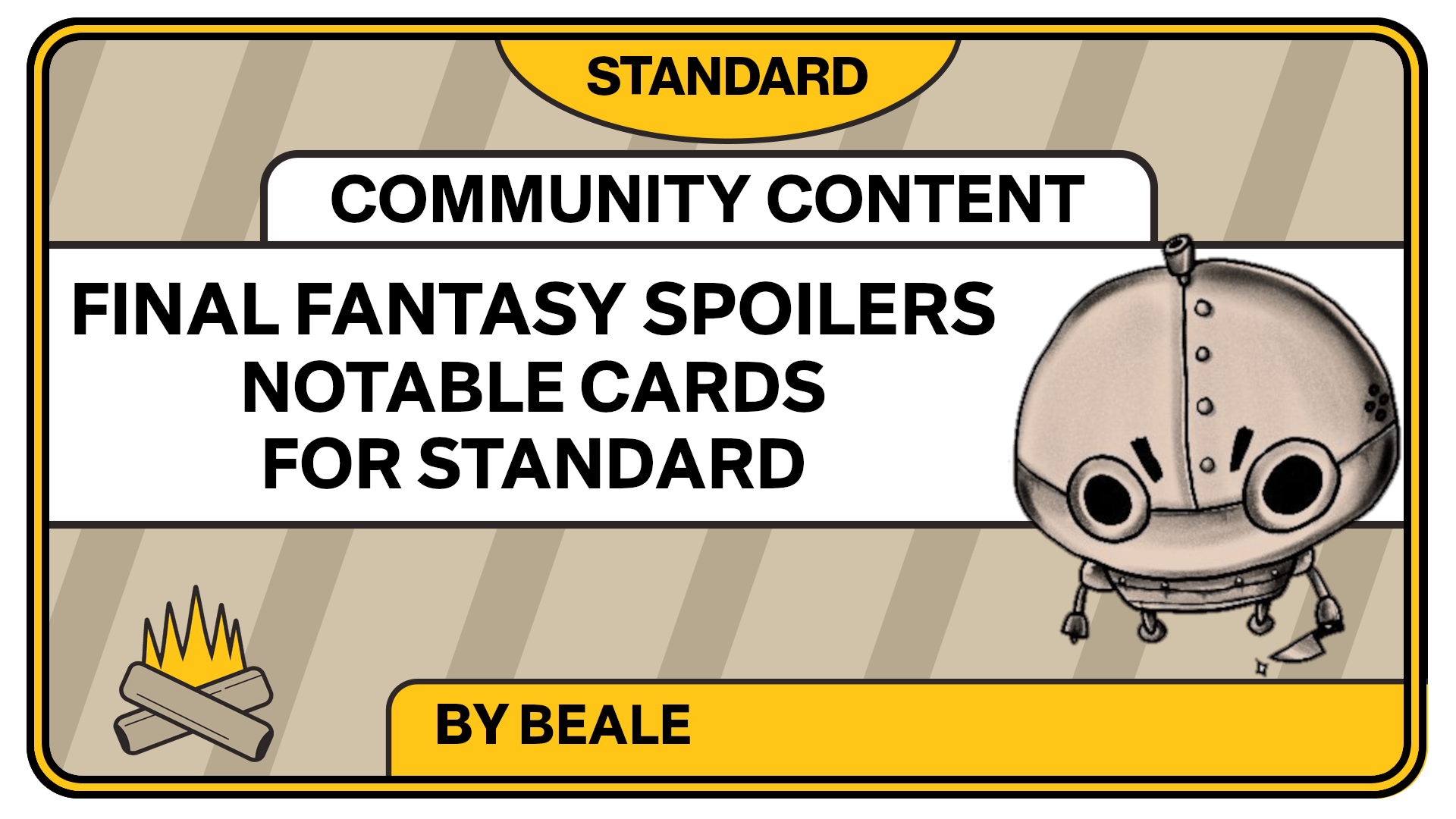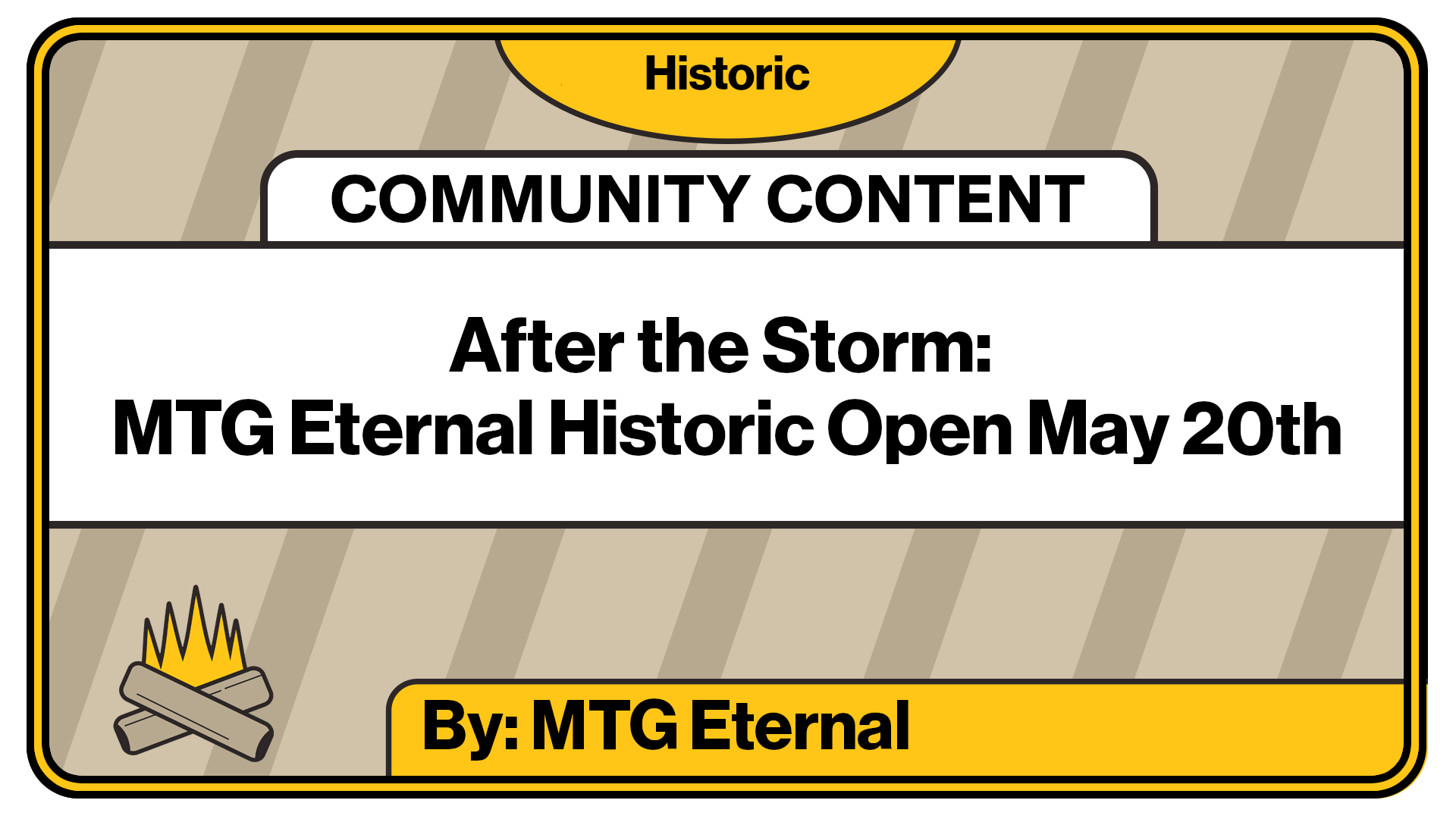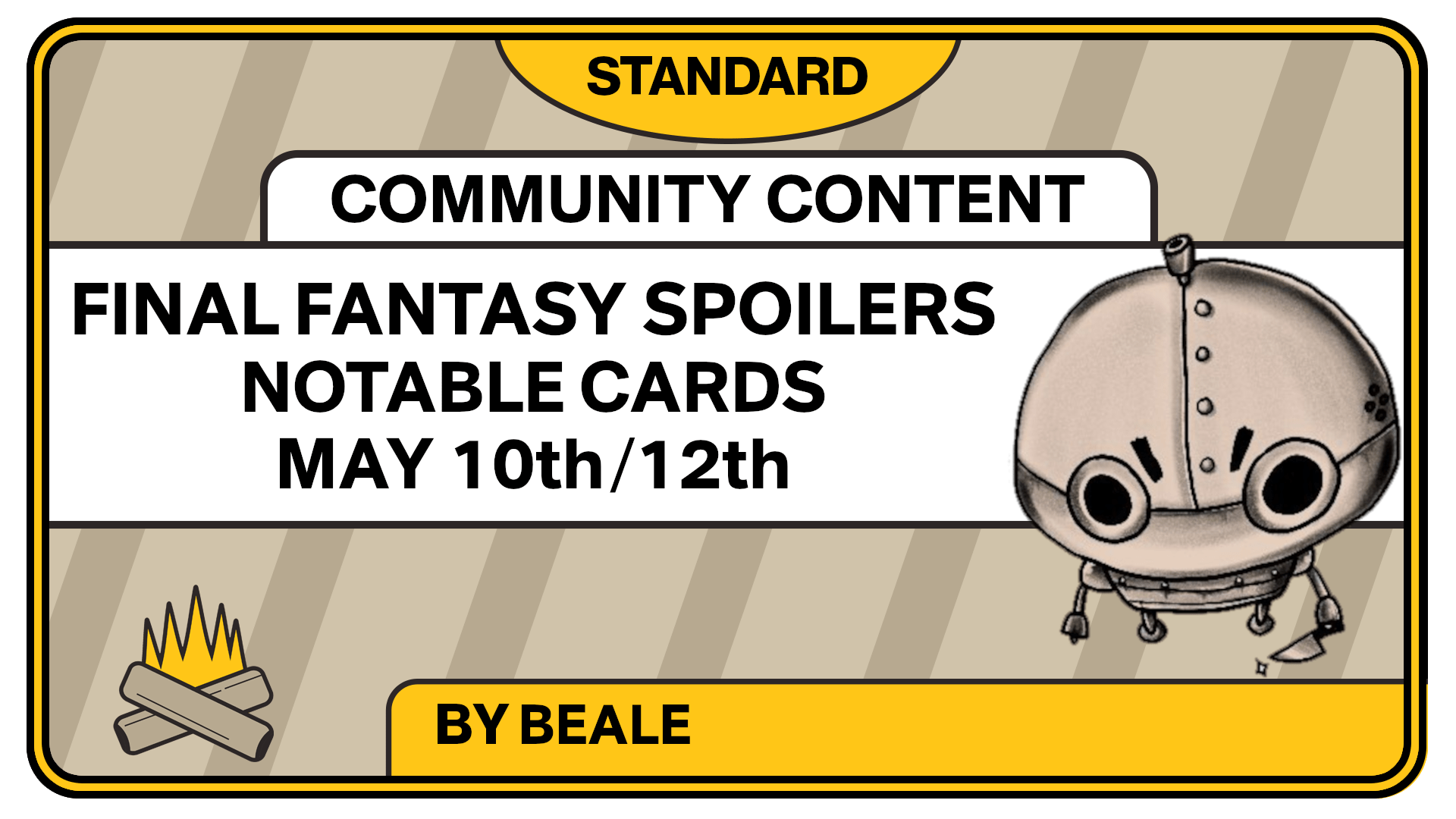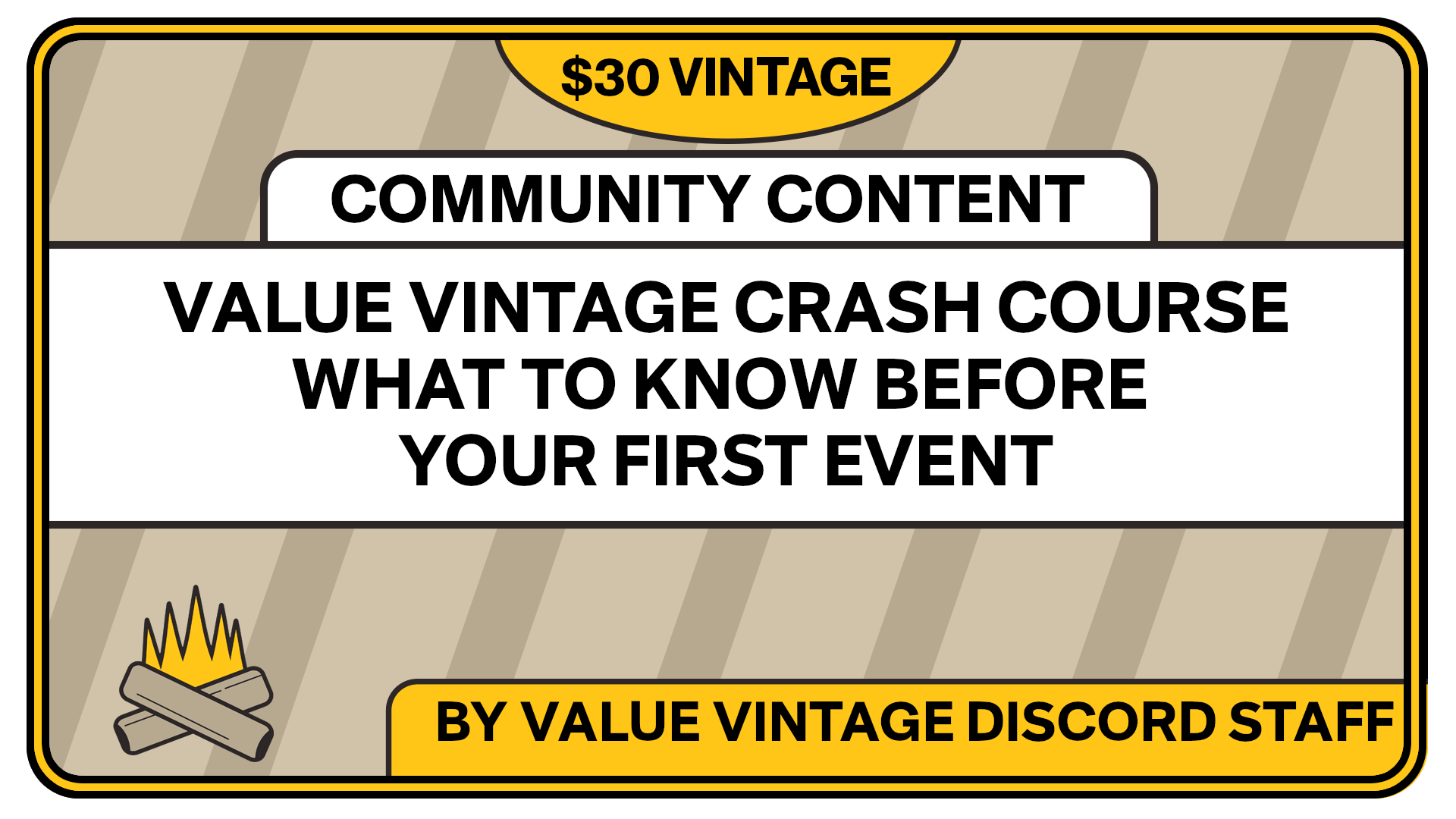Every set release, in this case Bloomburrow, when I sit down to write these, I always gawk at how powerful so many of the cards I consider putting on this list are on paper. While a lot of them do not end up going on to see play, I don’t feel like it’s because the cards I choose for this list are bad in a vacuum. Rather, I think Magic has just come so far in terms of power level that powerful cards, whether they be Commons or Mythics or anything in between, have to be more powerful than they used to.
Bloomburrow though is a little different. In most other sets, we end up with a couple powerful stand alone cards at lower rarities, similar to Pick Your Poison or Bitter Triumph. But with Bloomburrow and this list, most of the cards are build-around pieces or role players that have very specific homes. There isn’t a ton of generic power built in here.
That is not, however, to say that there is no power in Bloomburrow at all, because a lot of these cards have the potential to be incredibly strong in the specific shell they fit in. Philosophically, I love cards like this because individual decks getting support is interesting and makes brewing more fun. Puzzle piece cards are my favorite type of cards, rather than the generically strong cards.
And it isn’t just the commons and uncommons for Bloomburrow that I feel that way about. I don’t think there is a ton of generically powerful rares and mythics either, but the decks that get good cards from this set are going to *really* want them.
10. Dewdrop Cure
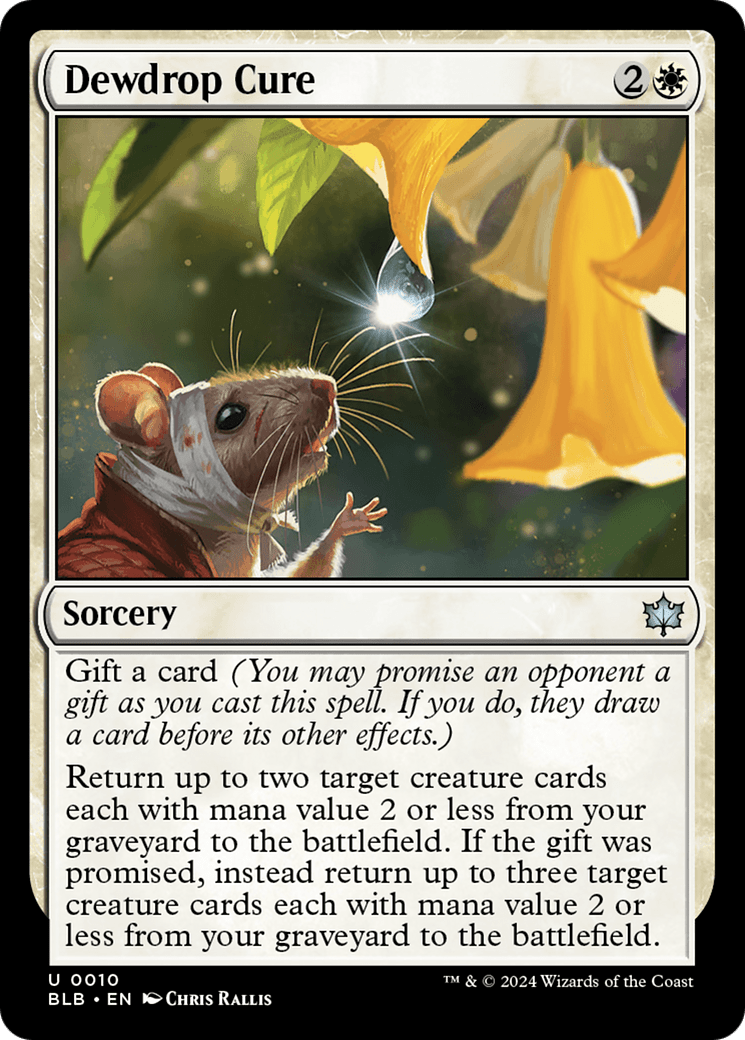
Dewdrop Cure, for example, has exactly one chance to see play, and that is in the Amalia decks in Pioneer. The fact that this card can return not just Wildgrowth Walker and Amalia, but can return the third piece to trigger the combo for just three mana is potentially strong, even though it does give your opponent a card. But what good is a card when you’re effectively dead?
The only question is if this is better than Return to the Ranks, because that is the card it is competing with. If Amalia players are deciding to stick to Return to the Ranks (or if Amalia or Wildgrowth Walker get banned), Dewdrop Cure has pretty much a zero-percent chance of seeing play anywhere else. It comes in at 10 on my list for that reason.
9. Seasoned Warrenguard
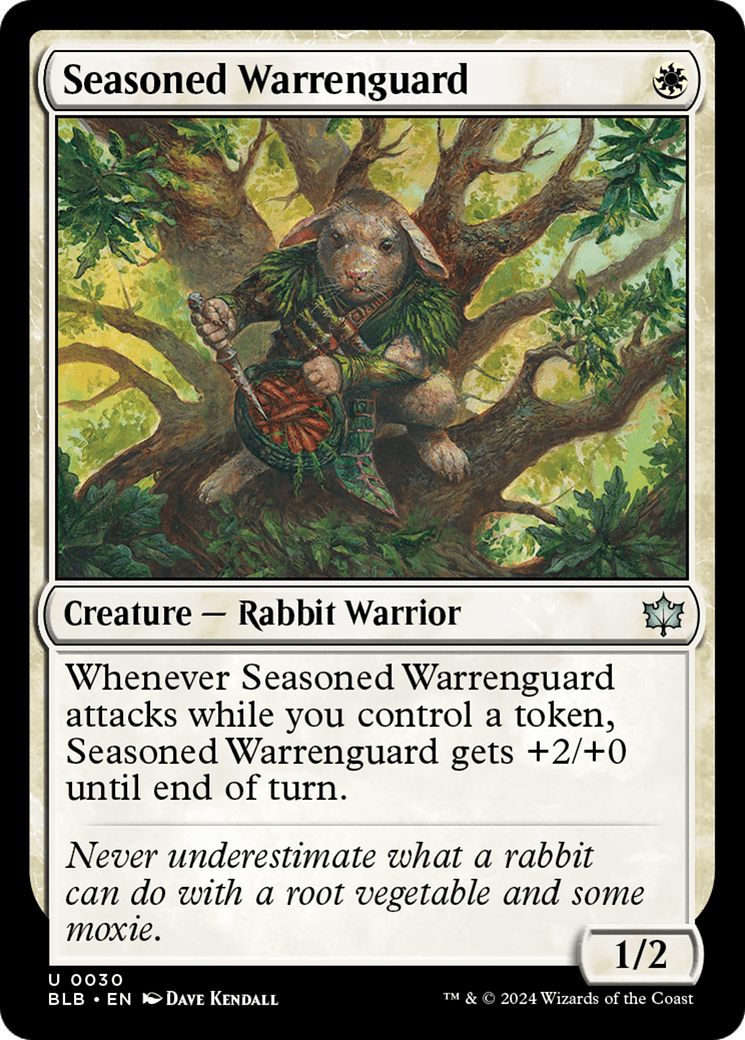
Seasoned Warrenguard almost does a Toolcraft Exemplar impression with a condition that is a little easier to hit, albeit with an effect that is ultimately less powerful. Nevertheless, attacking as a 3/2 for one mana is an effect that I’m not going to ignore.
Seasoned Warrenguard theoretically has two homes. There has already been some buzz about GW Rabbits in standard, and if that deck is to exist, Warrenguard will likely be a powerful one drop for the deck, as that deck will likely have some ways to reliably make tokens for cheap.
The other interesting one to me is Convoke, more specifically in standard than Pioneer. While this doesn’t make a token on its own, that deck does create a ton of tokens and does like to bash the faces of opponents in. Warrenguard certainly bashes face, but the lack of synergy with making multiple creatures might not quite play well enough. Standard convoke does play Warden of the Inner Sky, and with rotation now having taken place, I can envision a world where they play another generically solid beater.
8. Pond Prophet
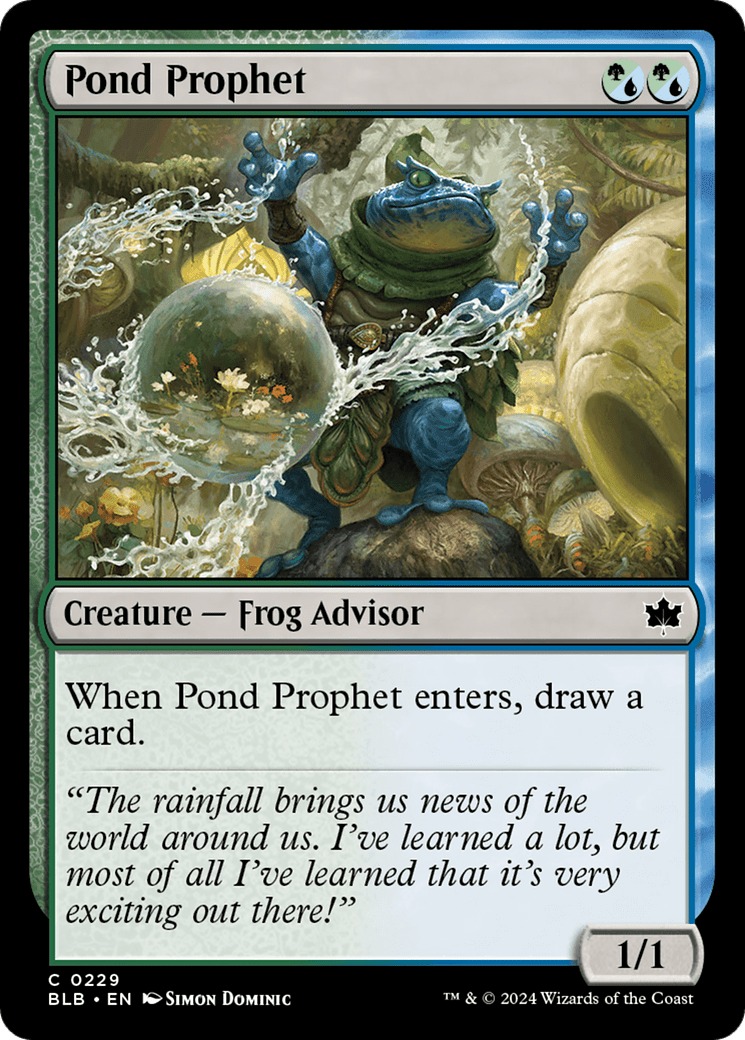
While Elvish Visionary is legal in Pioneer and doesn’t see play, Pond Prophet has one thing that makes it stand out to me over Visionary and that is the fact that it adds two green or blue devotion. While Pond Prophet doesn’t strike me as a card for Mono Green in Pioneer as we see it today, people *love* messing around with Mono Blue and I think this becomes a staple in those decks, however un-tiered they remain.
I also don’t think it’s worth ignoring a card like this for standard, especially because the entire Frog archetype from this set loves bouncing its own creatures. What better creature to bounce than an Elvish Visionary?
I enjoy cards like Pond Prophet because of how simple they are, but simple doesn’t have to mean weak, and I certainly don’t think this card is weak.
7. Flamecache Gecko
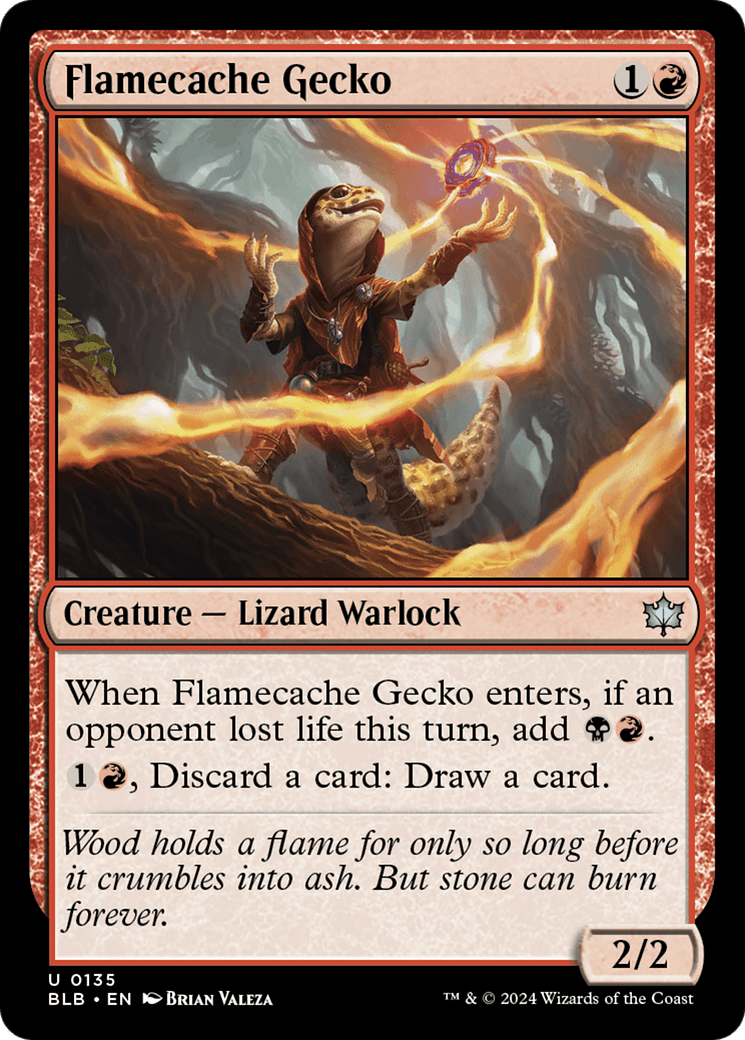
Flamecache Gecko was a card I almost overlooked for this list but upon a second scouring of the set list, it really caught my eye. We’ve learned from the Spectacle mechanic from Ravnica Allegiance just how easy it is to make your opponent lose life during a turn.
If you’re able to trigger spectacle, Flamecache Gecko is going to be a Burning Tree Emissary, which for a low to the ground aggressive deck, is very powerful. It even gives you something to do with the mana if you didn’t have another spell, allowing you to rummage right away if you so choose.
The rummage ability is also a pretty nice amount of upside even if it isn’t the turn you play it. Red decks are allergic to having more than four lands in play at any given time so giving you an option to pitch those extra lands for more burn spells and cheap creatures. I think all the parts of Flamecache Gecko add up to a card that’ll see play, and I don’t think it’ll be limited to just standard either.
6. Heartfire Hero
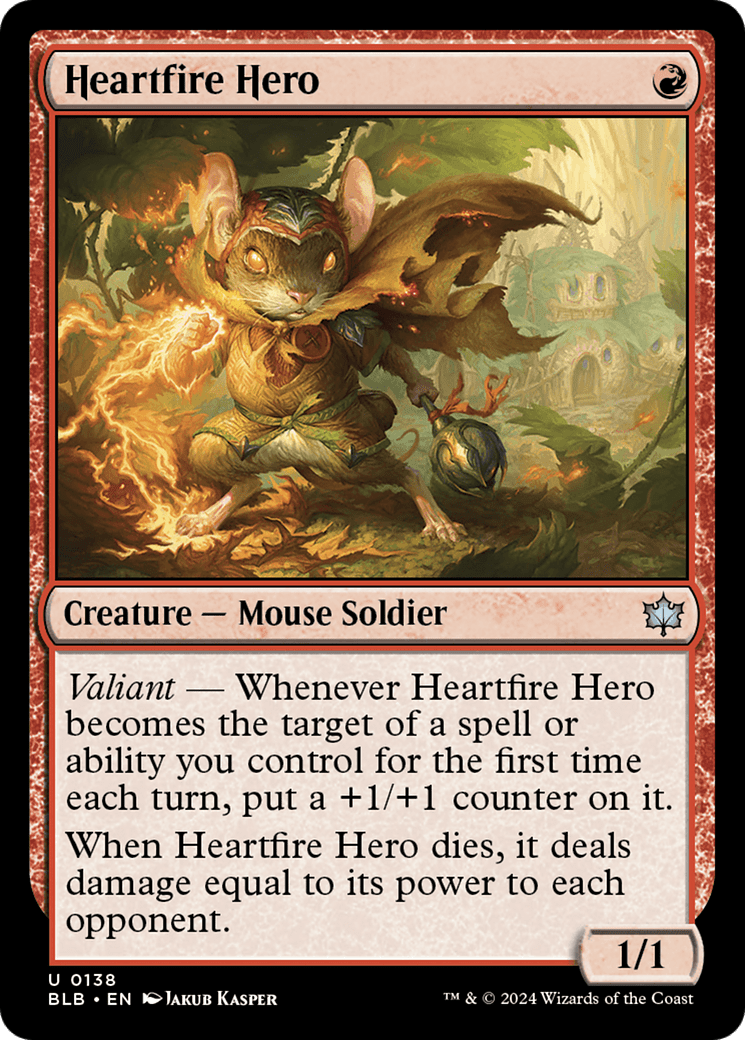
Heroic is one of the only aggro decks that survived the Exploring overlords of Pioneer, and Heartfire Hero slots into that deck incredibly well. Despite only triggering once per turn, Valiant is still a keyword that cares about being targeted, and Heroic decks do still targe their own creatures on their opponent’s turn occasionally.
But where Hero really shines is the death trigger. If you play a Heartfire Hero, then use Homestead Courage, for example, to make it a 3/3, your opponent killing it will ultimately just result in them bolting themselves.
Hero is also an absolute beating with the card Monstrous Rage, so I foresee Heartfire Hero being a staple in Mono Red in standard, especially if the deck can adopt one more spell that triggers Valiant. There are even a few solid ones in this set.
5. Feed the Cycle
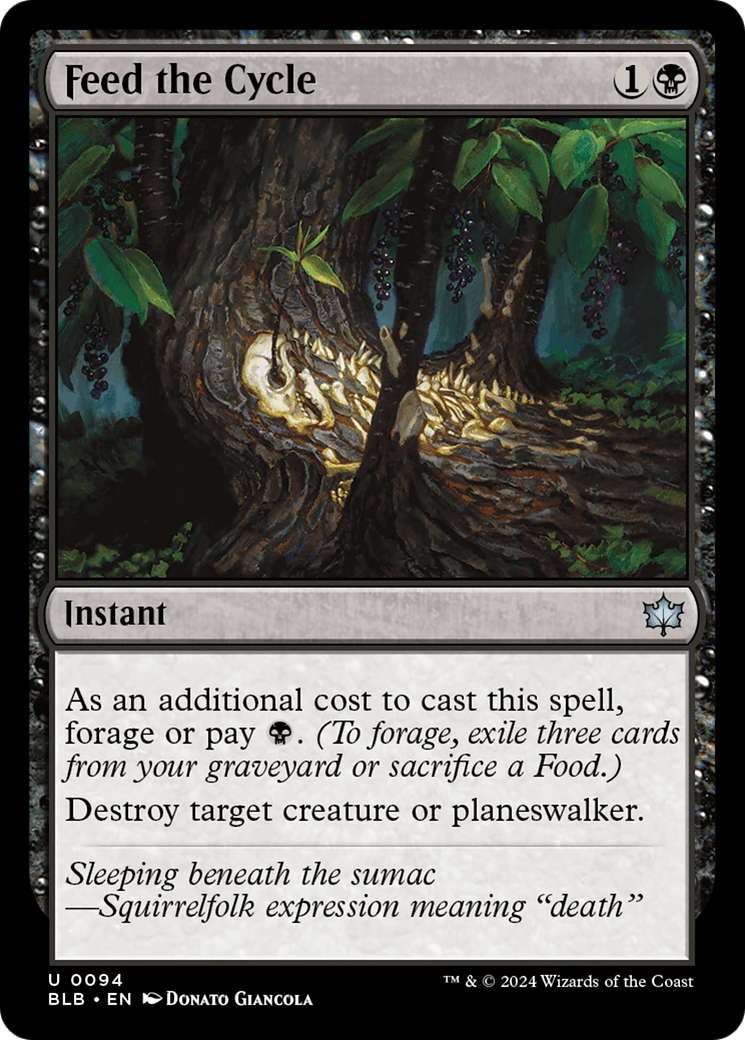
This is me learning a lesson. I have always been guilty of rating Doom Blade-esque cards way too highly on my lists. For some reason, I almost always fall for the trap. But I think Feed the Cycle is going to be the Doom Blade choice for formats like Modern or Timeless, where being able to exile three cards from your yard is somewhat trivial because of free spells, Mishra’s Bauble, and Fetch Lands.
Now, those formats don’t really see Doom Blades played in droves, however Feed the Cycle being able to hit Planeswalkers is obviously very big upside. At worst, Feed the Cycle is Hero’s Downfall, which is certainly not a playable card in 2024 but if you can reliably Forage with it, it’s going to be very powerful.
Additionally, if there is a Food deck in Standard or if Sacrifice decks come back in Pioneer, Feed should be a strong inclusion for those as well, as being able to Forage with a food token makes this spell effectively have three separate casting modes.
I also want to note that I was originally considering Fell for this list, until Feed the Cycle was revealed. Fell probably would’ve slotted in at number 10, but with Feed the Cycle in the same set, I simply couldn’t justify it.
4. Bandit’s Talent
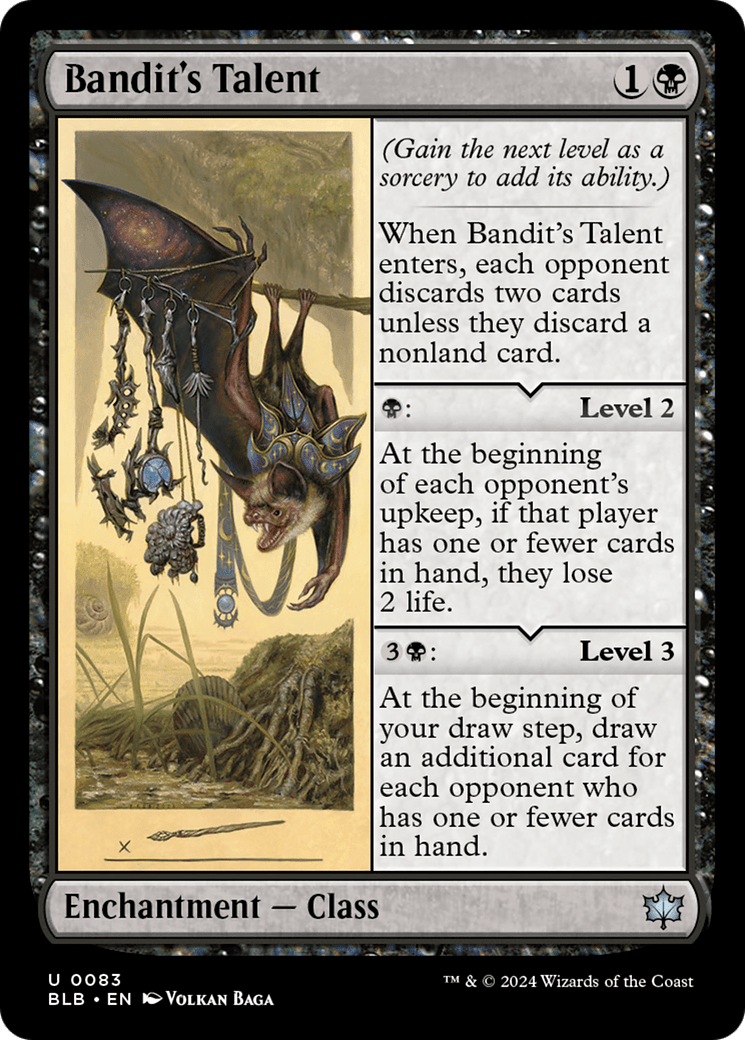
Bandit’s Talent might be the best Rack card printed since… Well, the Rack. Waste Not decks in Pioneer have not played Shrieking Affliction because the card is too low impact early on. Bandit’s Talent, however, gets around the low impact nature of Shrieking Affliction by also giving you a built in discard mode.
This actually has a solid curve with Waste Not too, because if you play it on turn three after you play Waste Not, you can put it on level two right away if you have nothing else to do, or it lets you double spell a Thoughtseize or Fatal Push if you need to.
While level three is a little win more, you do often in Waste Not decks find yourself without cards in hand so having the mana sink on it is nice, but this will mostly be played for levels one and two, and I expect Bandit’s Talent to be a powerful addition to Waste Not in Pioneer.
3. Long River’s Pull
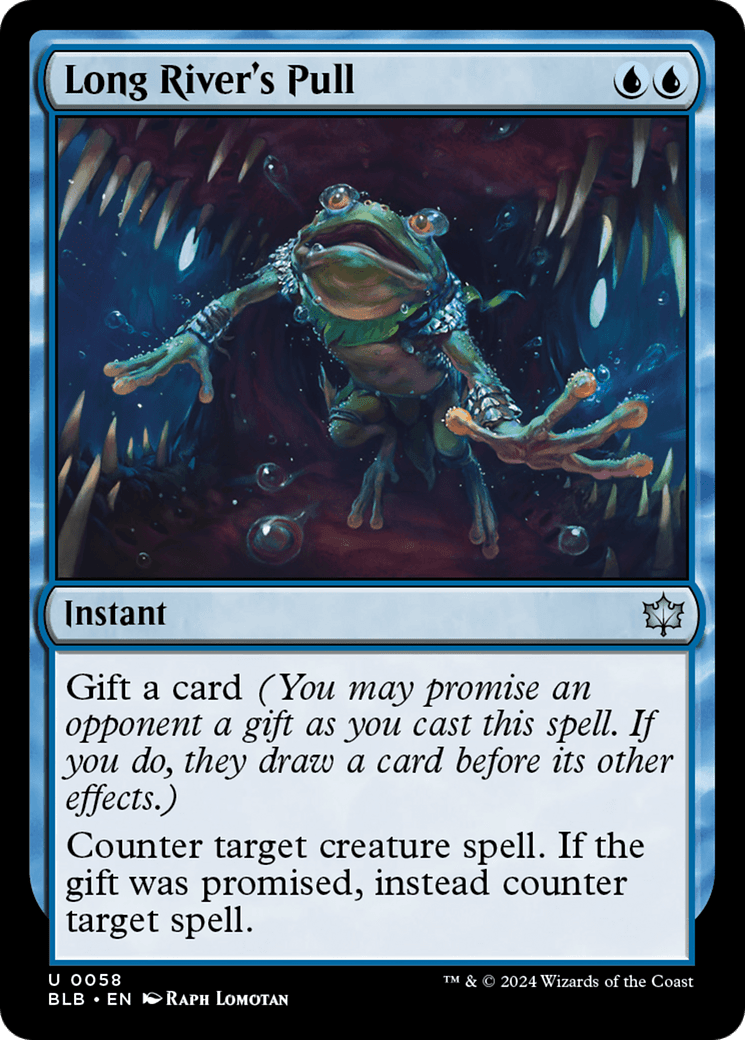
I think Long River’s Pull is a very strong card for Pioneer and Standard and I think people are going to get a little too lost in the drawback.
In the case of Standard, if there is a Mono Blue creature deck akin to 2018 Guilds of Ravnica, Long River’s Pull is going to be a massive part of it. In fact, any deck that can leverage the tempo you gain by countering anything unconditionally for two mana before the card they draw can matter will want this card.
On top of that, it’s not like there’s even a drawback all the time. It is just a straight up Essence Scatter with the upside of being able to counter anything in a pinch.
In Pioneer, the same philosophy applies. If you’re playing a heavy creature tempo deck, you might not care as much about the card being drawn because you can kill the opponent before it matters. Additionally, Pioneer unlocks the synergy with Narset, Parter of Veils, which is obviously incredibly strong in that on your opponent’s turn, Long River’s Pull will legitimately be Counterspell with no downside. There is a similar synergy that’ll be more relevant to standard with Faerie Mastermind.
Long River’s Pull is going to be a polarizing card but I feel pretty confident that there are enough ways to make the times where you do have to give the gift not hurt as much as it might seem.
2. Eddymurk Crab
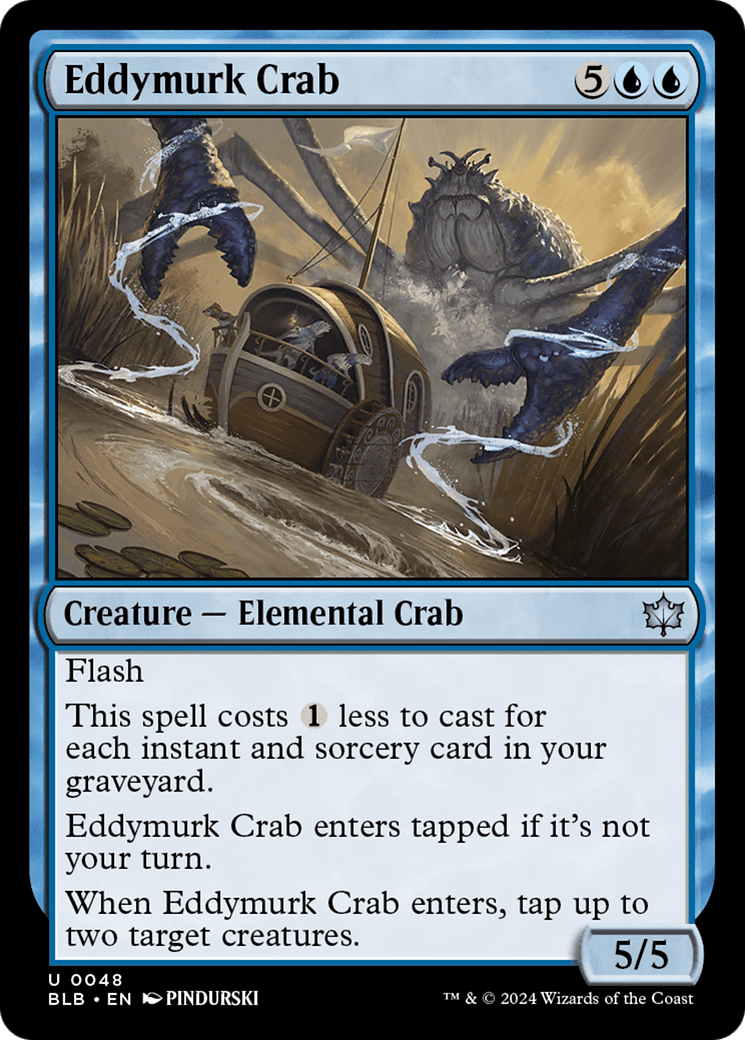
Eddymurk Crab is exactly my kind of card, and it and Tolarian Terror together could be a real force in standard.
While Crab can’t be an ambush blocker, it can push through a ton of damage in games where the board stalls a bit, or can help keep you alive against more aggressive decks by nullyfing a couple attackers then just being a 5/5 to block the next turn.
The obvious card people are going to think of here is Elderdeep Fiend, but obviously they care about different things. Eddymurk Crab wanting you to be a spellslinger style deck lets this truly be a surprise finisher and a tempo piece all in one. I think this card has a pretty good shot to see Pioneer play as well, perhaps even in something like Phoenix, which is the most natural fit for the card.
Eddymurk Crab probably has to cost four or less consistently for it to be any good and you are ideally casting it for two a lot of the time, but if you have enough cheap instants and sorceries, that should be more than feasible.
Honorable Mentions:
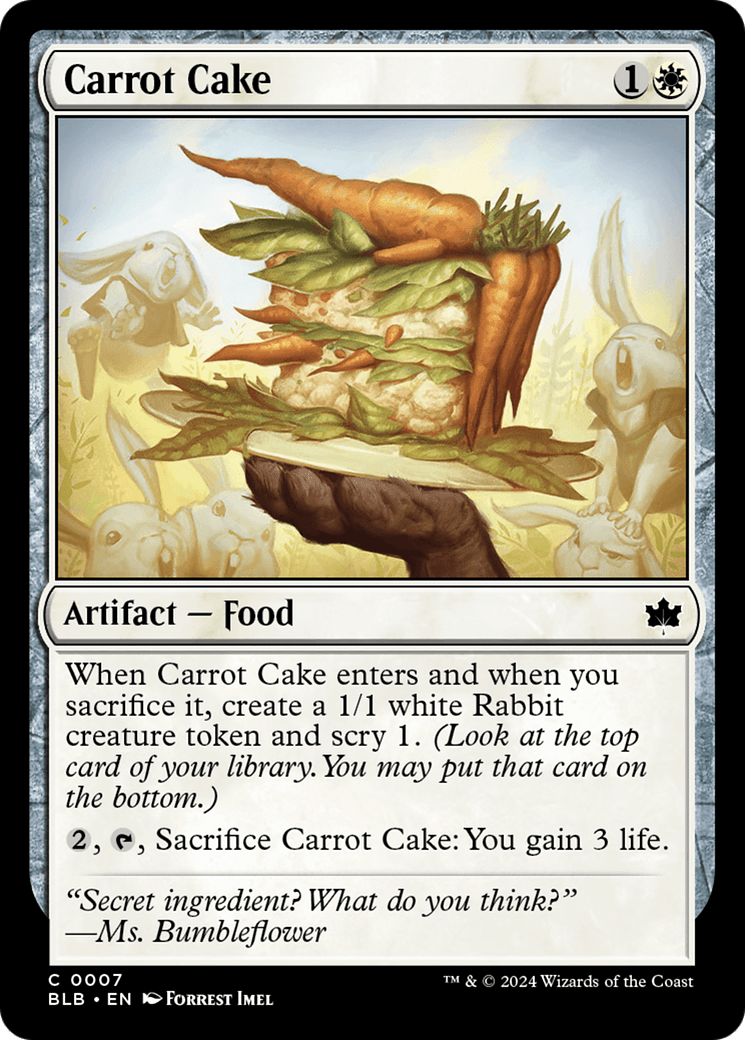
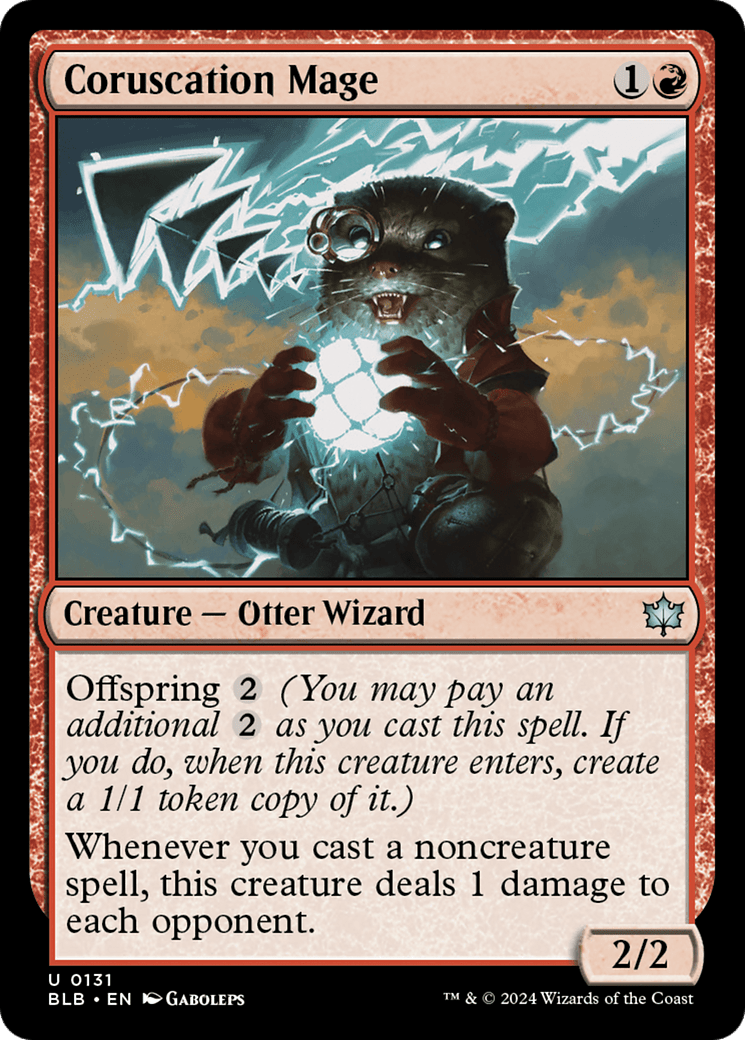
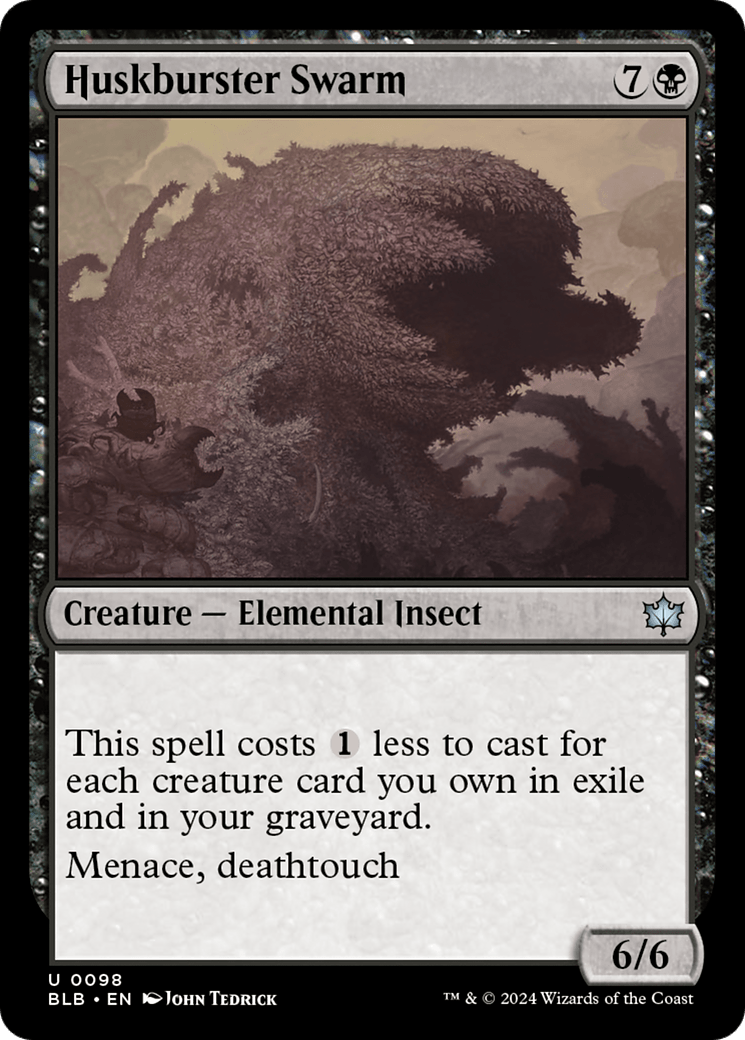
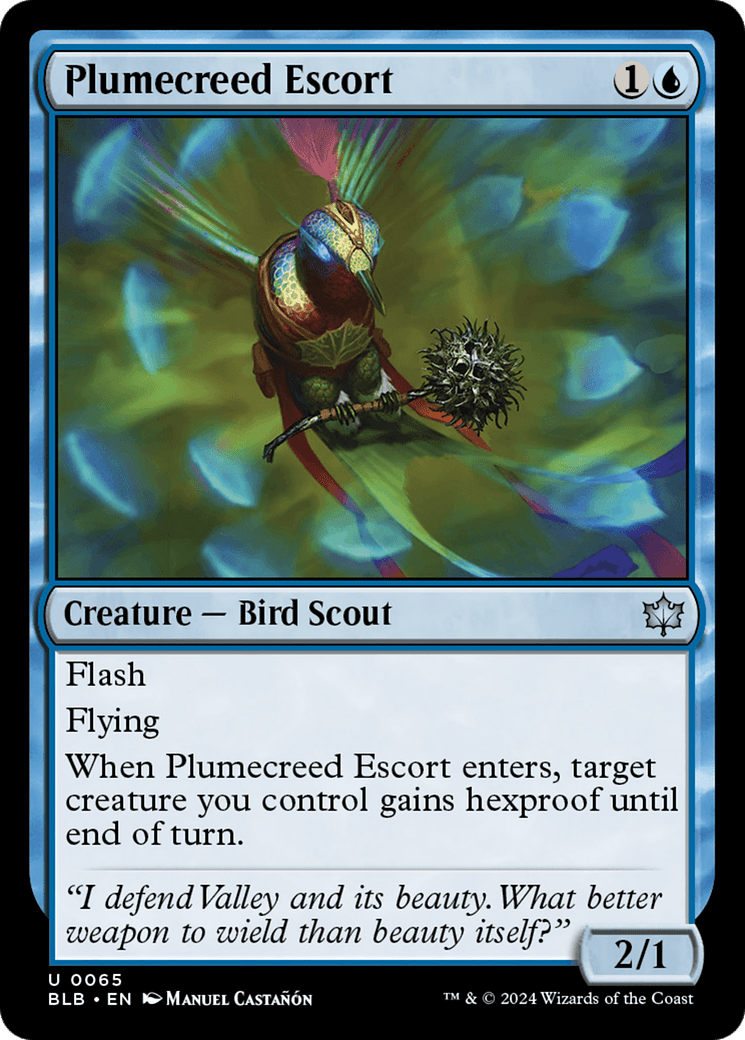
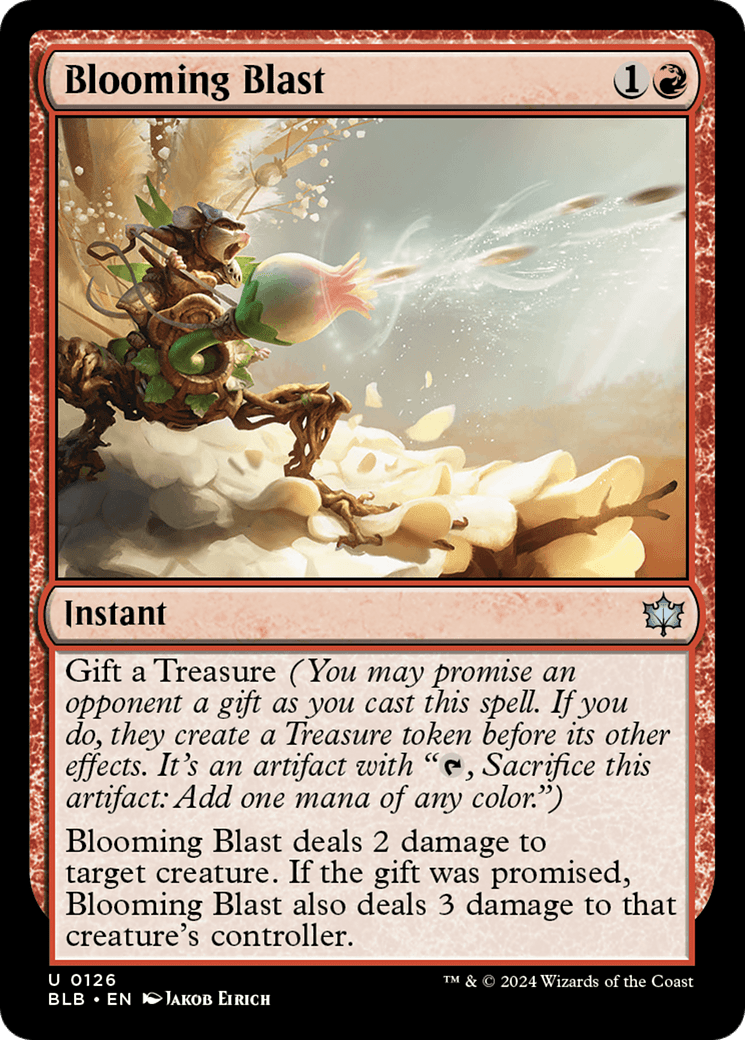
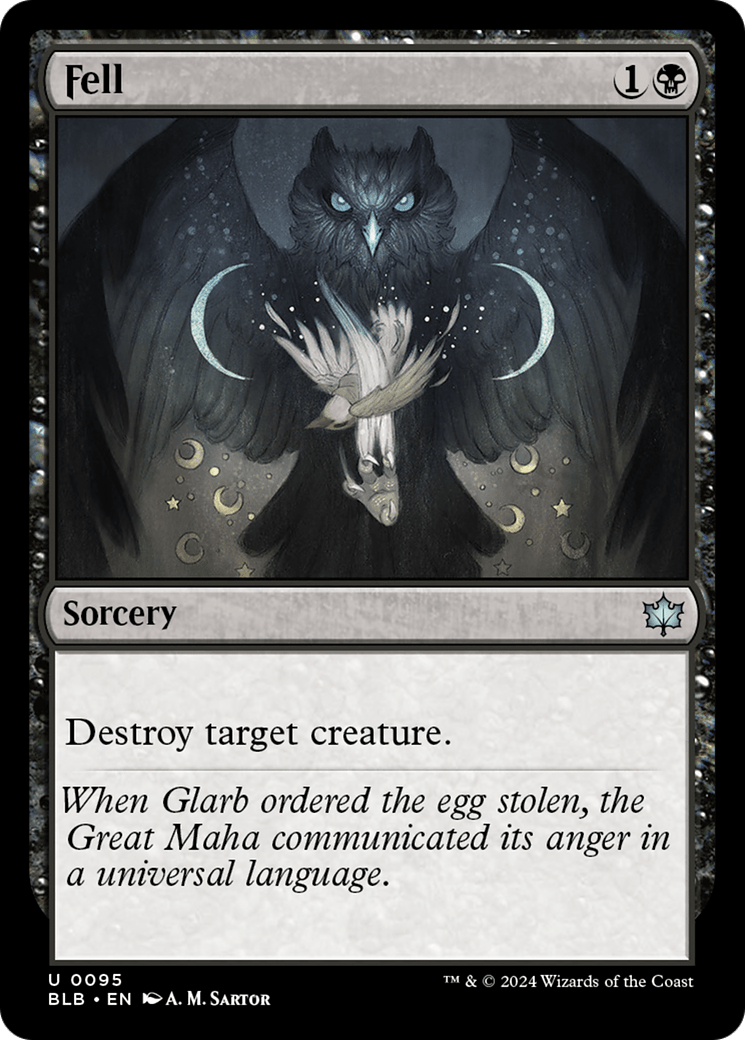
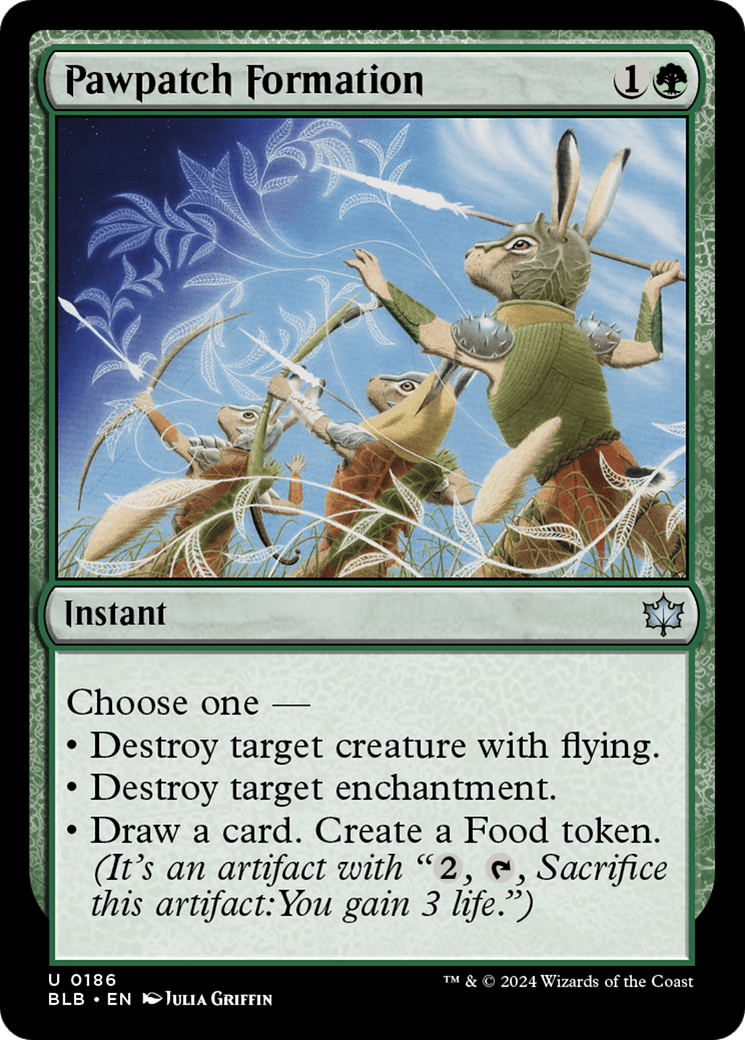
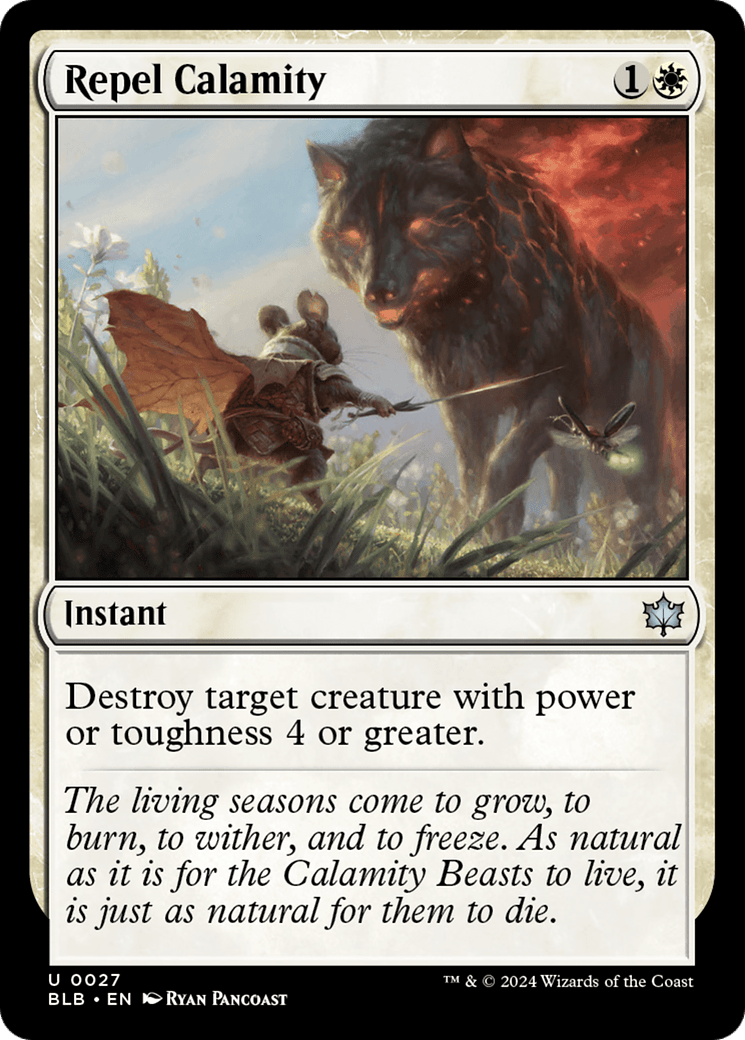
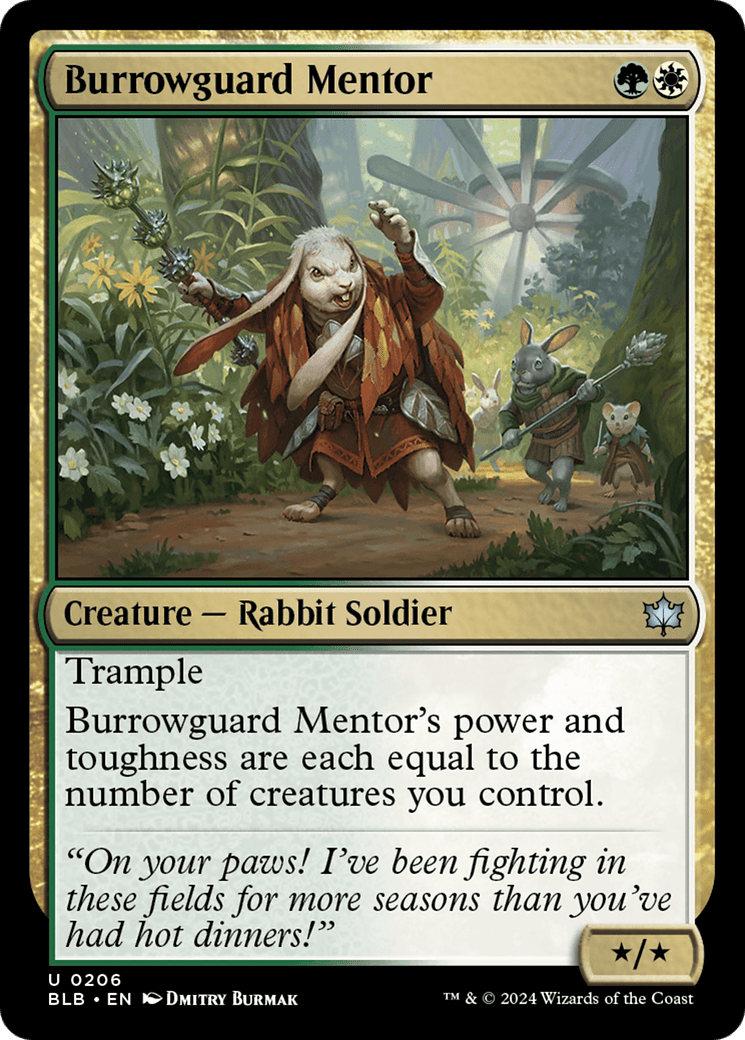
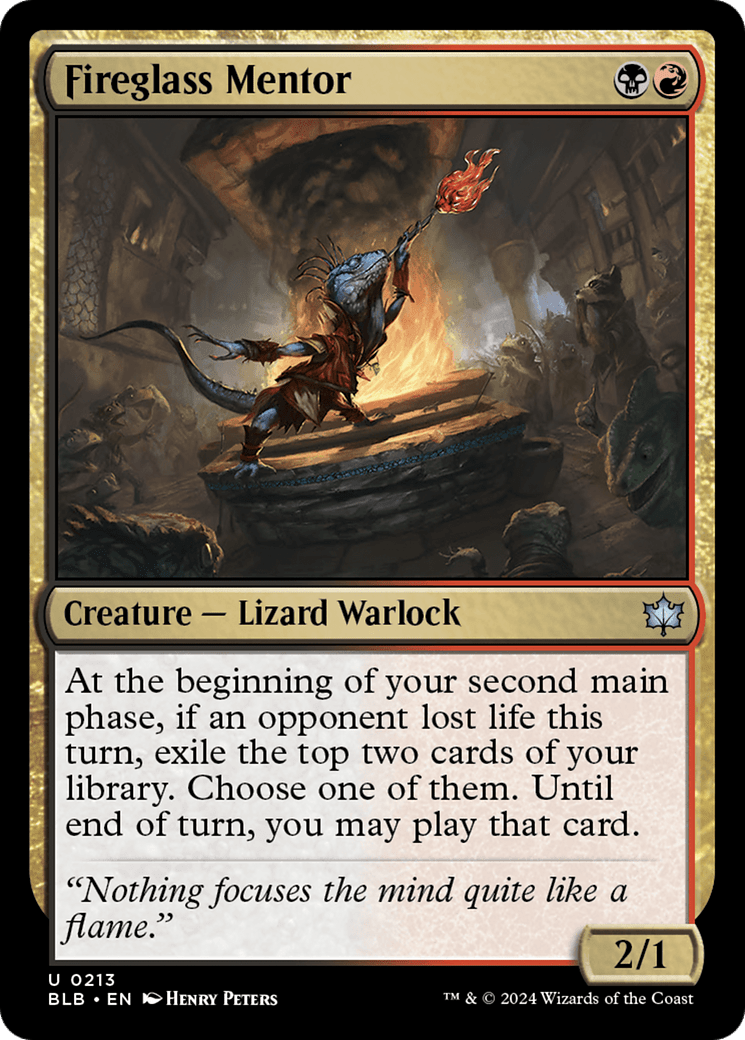
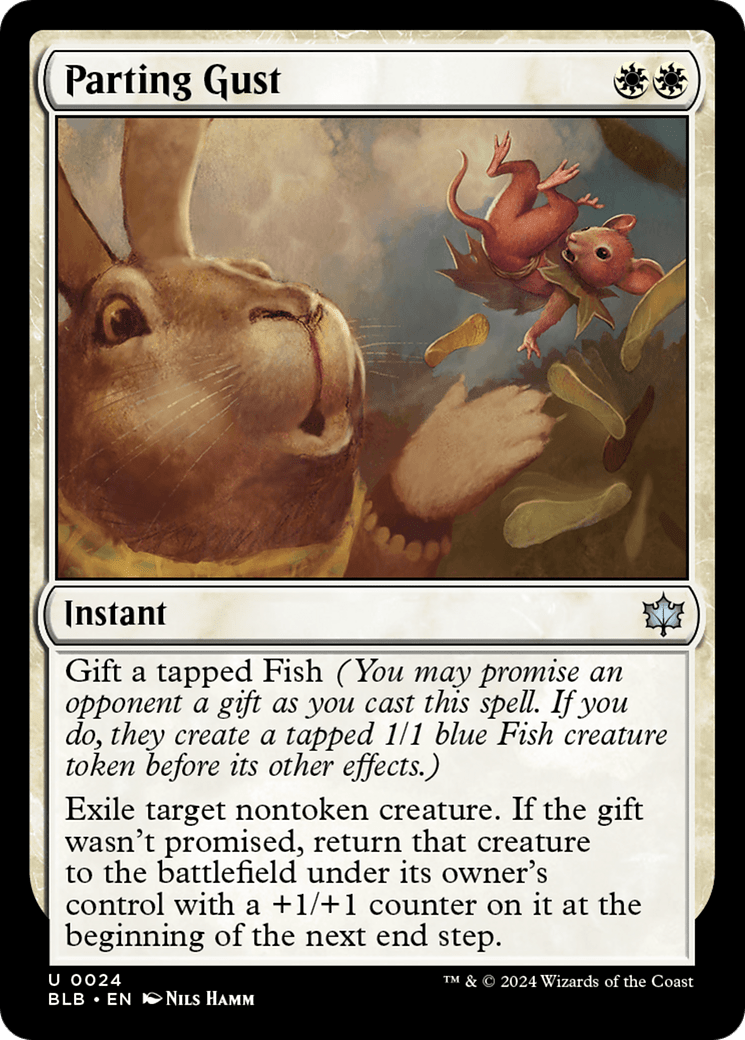
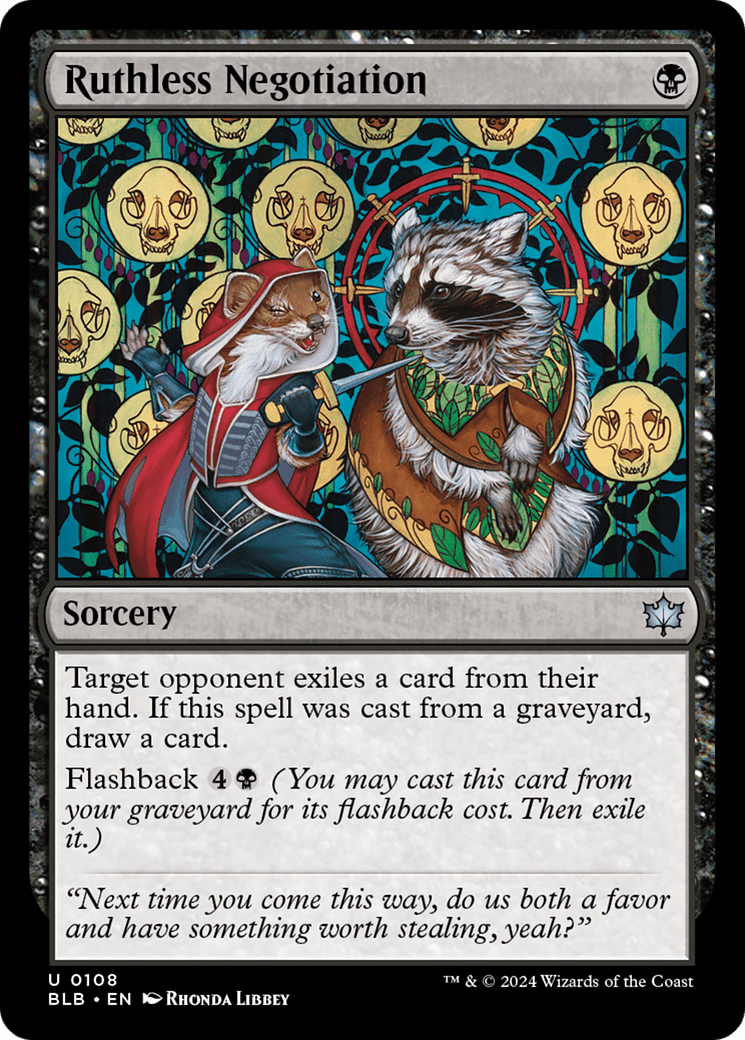
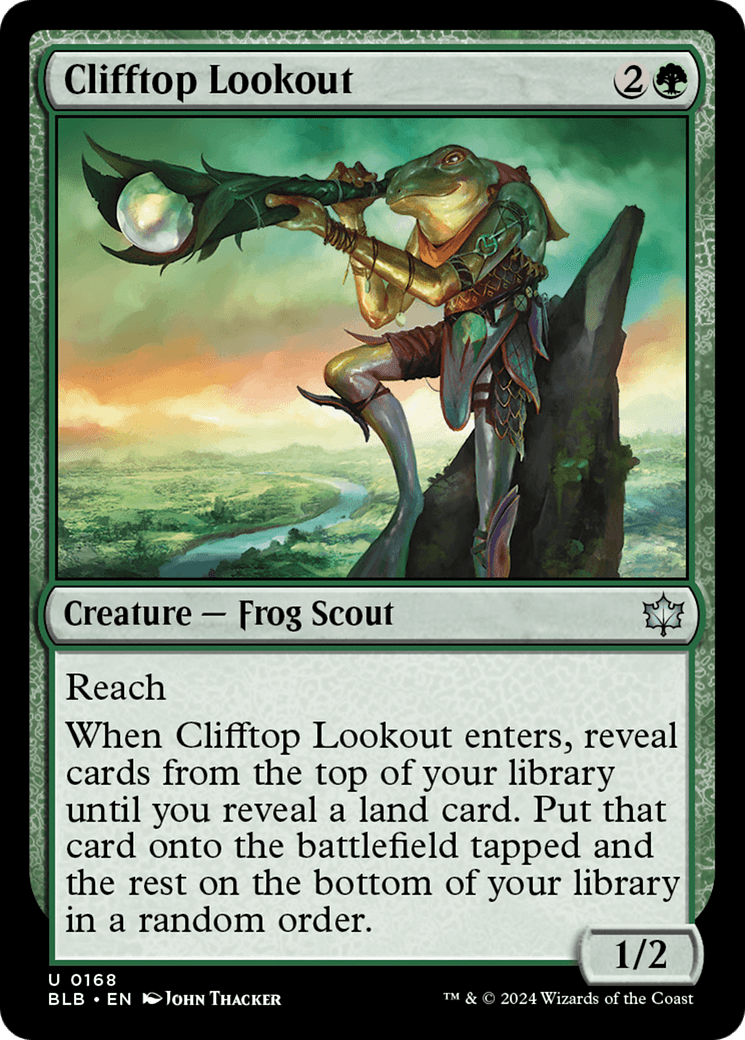
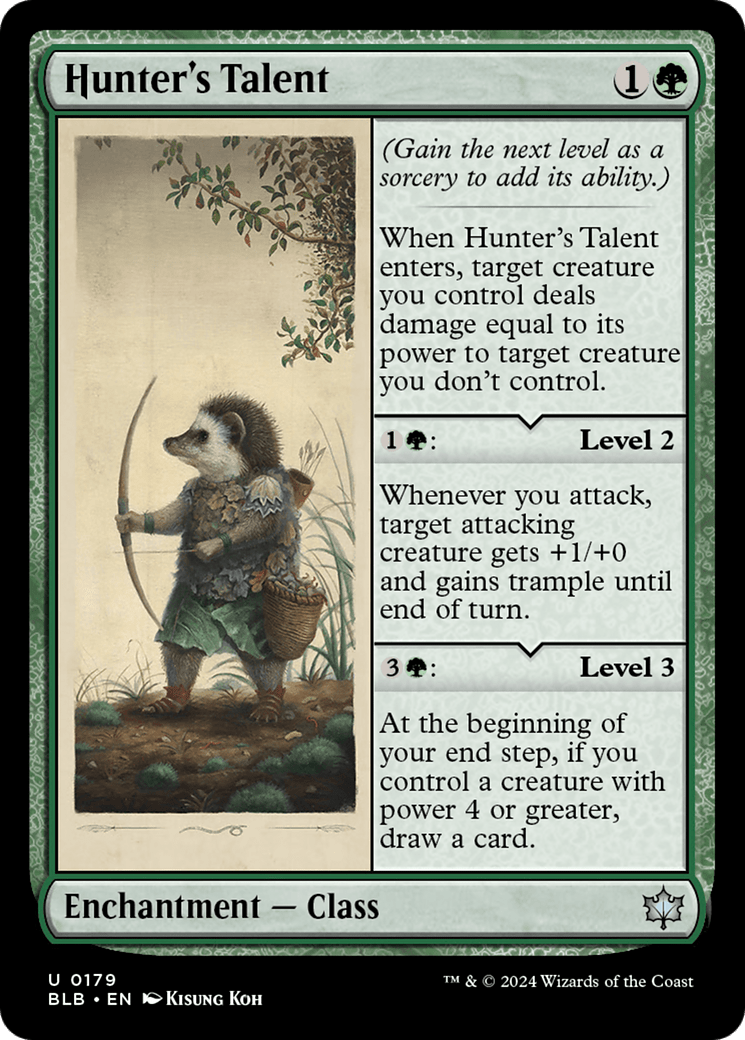
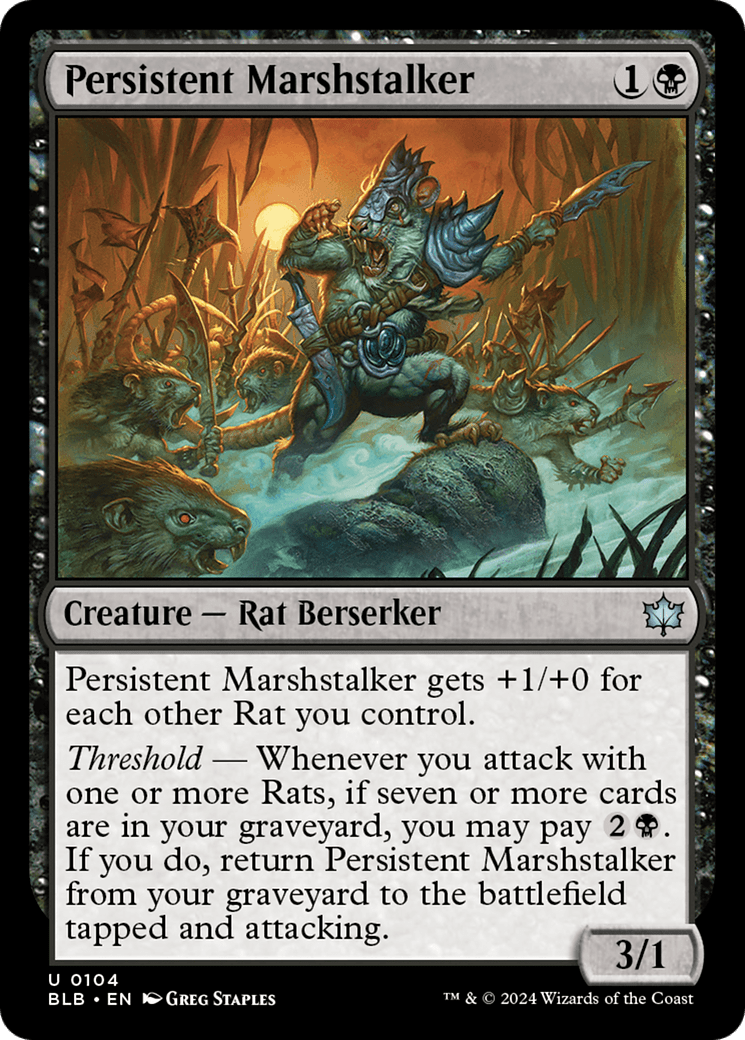
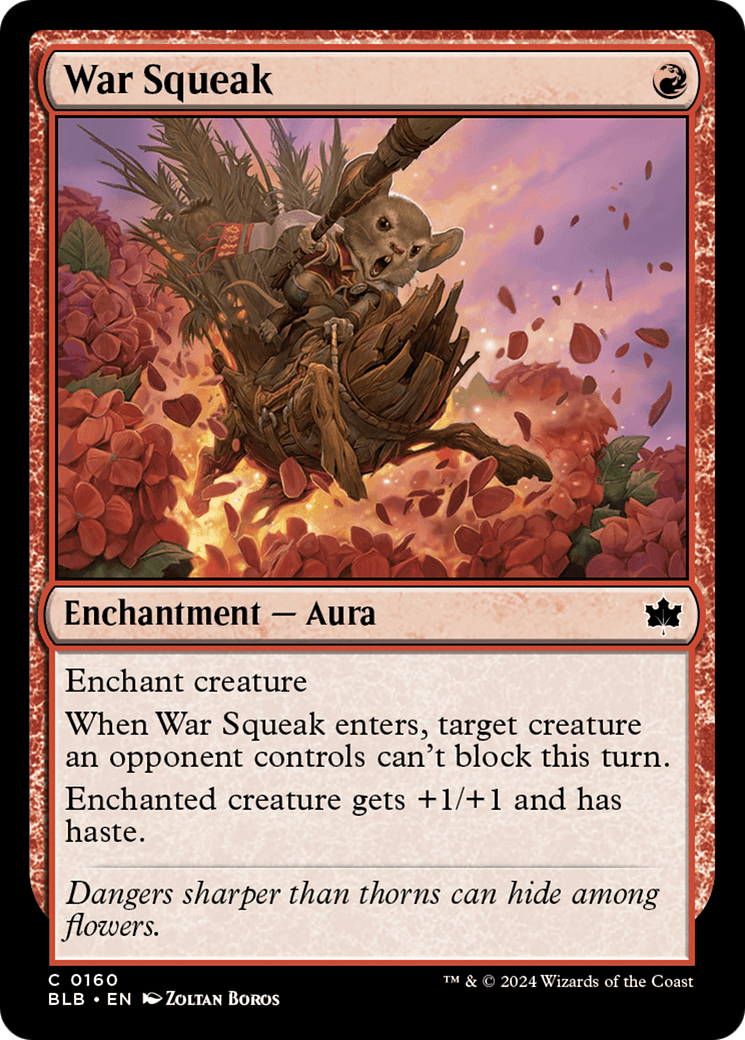
1. Stormcatch Mentor
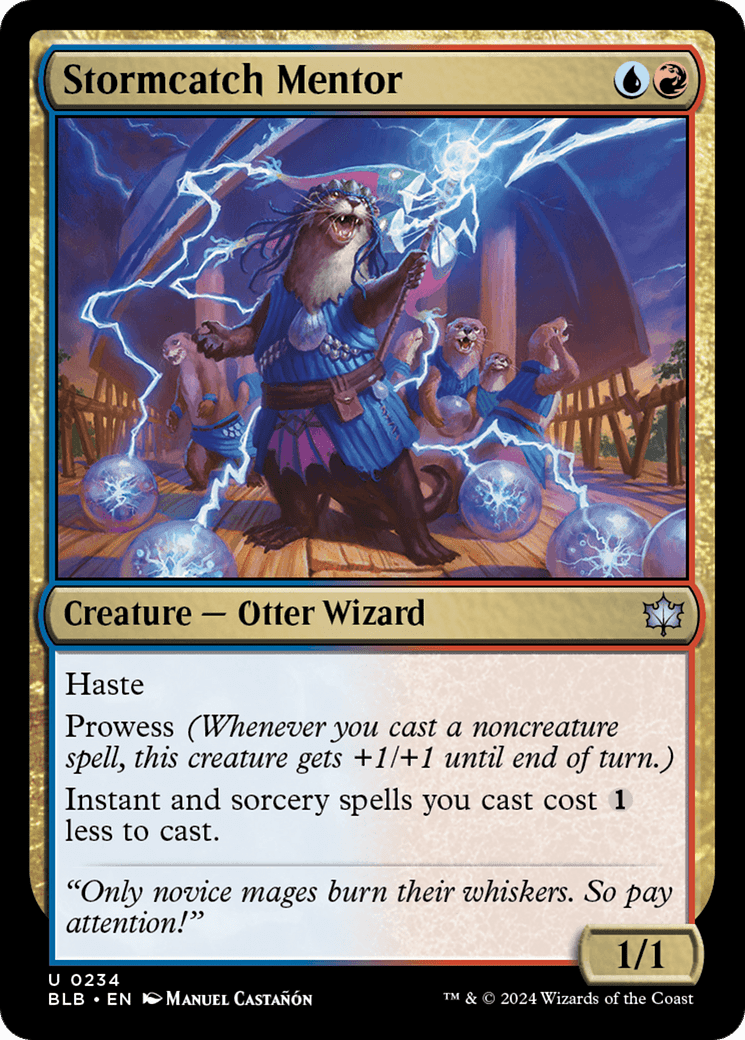
While I think there are a lot of strong commons and uncommons in this set, I actually didn’t feel strongly about putting any of them at the number one. In the past several sets, we’ve seen a few uncommons that are just generically pretty powerful in one way or another, but everything on this list and most of the ones I considered are buildarounds that are going to fit into shells but not really anywhere else. And Stormcatch Mentor is that to a tee.
People love UR Spellslinging. People love when their spells cost less. People love prowess creatures, especially ones that have haste. People love the Wizard creature type. People are probably REALLY going to love a card that does all those things.
While I don’t know the format specifically, Stormcatch Mentor is probably going to end up in some kind of deck with Monastery Swiftspear and Slickshot Showoff as it is absolutely the perfect card for those decks, which even post rotation is the three main competitive formats.
The cost reduction will be most powerful in Standard because in Pioneer and Modern, a lot of the spells you’re playing cost one mana anyway so you can’t fully take advantage of the cost reduction. Standard, however, isn’t as efficient and this is going to play exceptionally well with cards like Wrenn’s Resolve, as it lowers the cost of it and the cards you exile off it, allowing for more consistent chaining of spells.
In Pioneer, there could be circumstances where you can’t quite push for damage through attackers so your Light Up the Stage will cost two mana with this instead of three, or same for your Skewer the Critics. There’s a happy middleground there where those things might be applicable.
In Modern it’s interesting because not only is it a Wizard to get all the value out of Flame of Anor, but it also makes it only cost two mana, which is the stone-cold nuts. It also actually nets you a mana off Manamorphose, yet another insane upside of this thing.
No matter where it ends up, Goblin Electromancer has been fired, and Stormcatch Mentor is there to take its job. That’s all there really is to say.
My favorite card in the set: Mockingbird
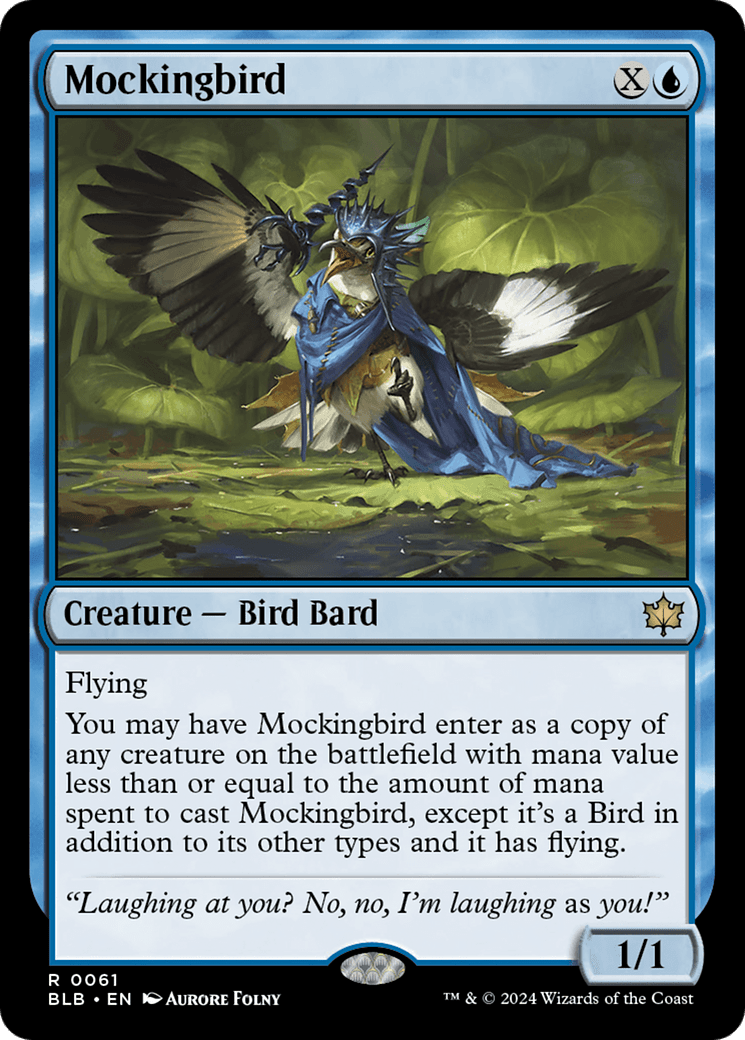
I love everything about Mockingbird. I love the name, I love the card type, and most of all, I love the effect. So many people are sleeping on how strong Mockingbird is in every format.
For starters, it doesn’t care about the X cost, it cares about mana spent, meaning that Mockingbird can clone a one drop for one mana on-curve, or clone a two drop for two mana, etc.
It also has a generically higher floor than most clones, because most clones just die as 0/0s. This is at the very least a 1/1 flier if there are no creatures on board, and there are decks that are going to be at least somewhat satisfied with that.
This is also not a standard clone card that only sees play in combo decks. This is more like a Phantasmal Image with higher upside even still because it gives any creature flying and it doesn’t have the downside of dying if it’s targeted.
I’m very excited to play this card in pretty much every format and I’m even going to try it in UB Frog in Timeless.
–
Bloomburrow has the potential to be my favorite set ever. The art and setting alone put it very high and there are a lot of fascinating cards I’m excited to play. I think it’s fitting Standard rotation happens with this set as well, as it pushes several more unique creature types that have a better chance to thrive in a meta that is much less solved and with a more limited card pool. I hope everyone enjoys this set as much as I expect I will.

